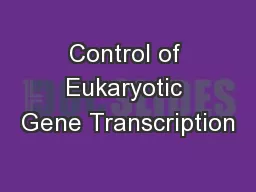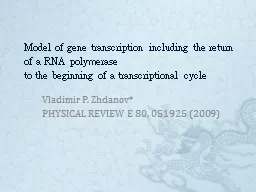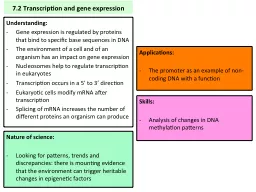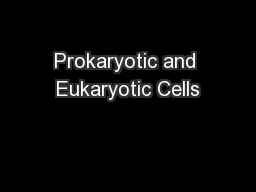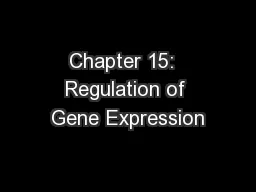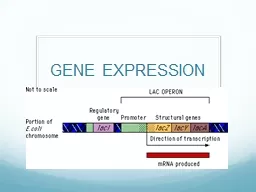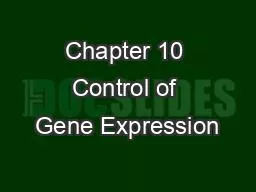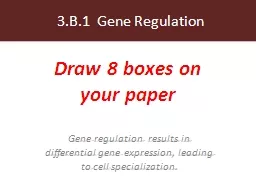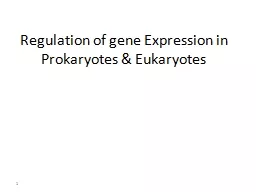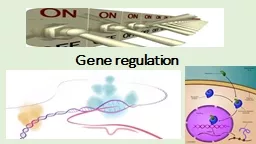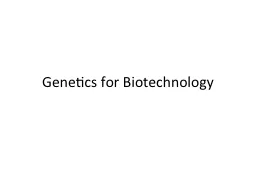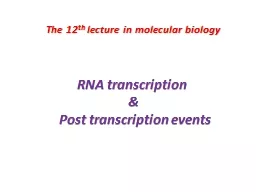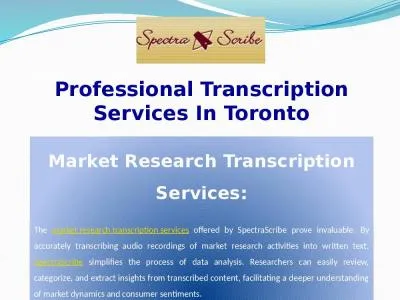PPT-Control of Eukaryotic Gene Transcription
Author : marina-yarberry | Published Date : 2018-02-06
Teachable Unit Gene Expression Team NANSI 2013 University of Minnesota Participants Michael Burns Lucy He David Kirkpatrick Bridget Lear Tamar Resnick Turk Rhen
Presentation Embed Code
Download Presentation
Download Presentation The PPT/PDF document "Control of Eukaryotic Gene Transcription" is the property of its rightful owner. Permission is granted to download and print the materials on this website for personal, non-commercial use only, and to display it on your personal computer provided you do not modify the materials and that you retain all copyright notices contained in the materials. By downloading content from our website, you accept the terms of this agreement.
Control of Eukaryotic Gene Transcription: Transcript
Download Rules Of Document
"Control of Eukaryotic Gene Transcription"The content belongs to its owner. You may download and print it for personal use, without modification, and keep all copyright notices. By downloading, you agree to these terms.
Related Documents

